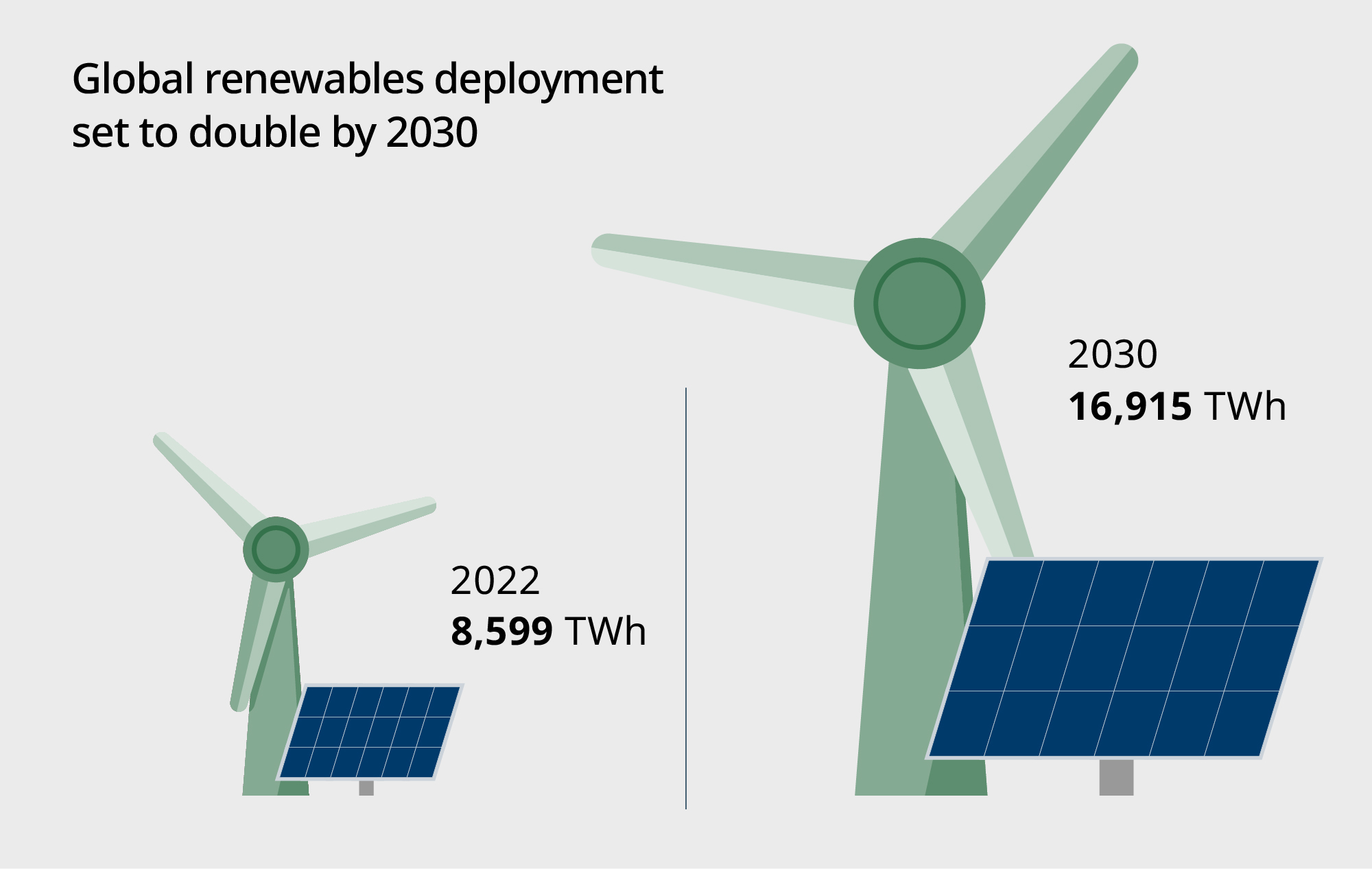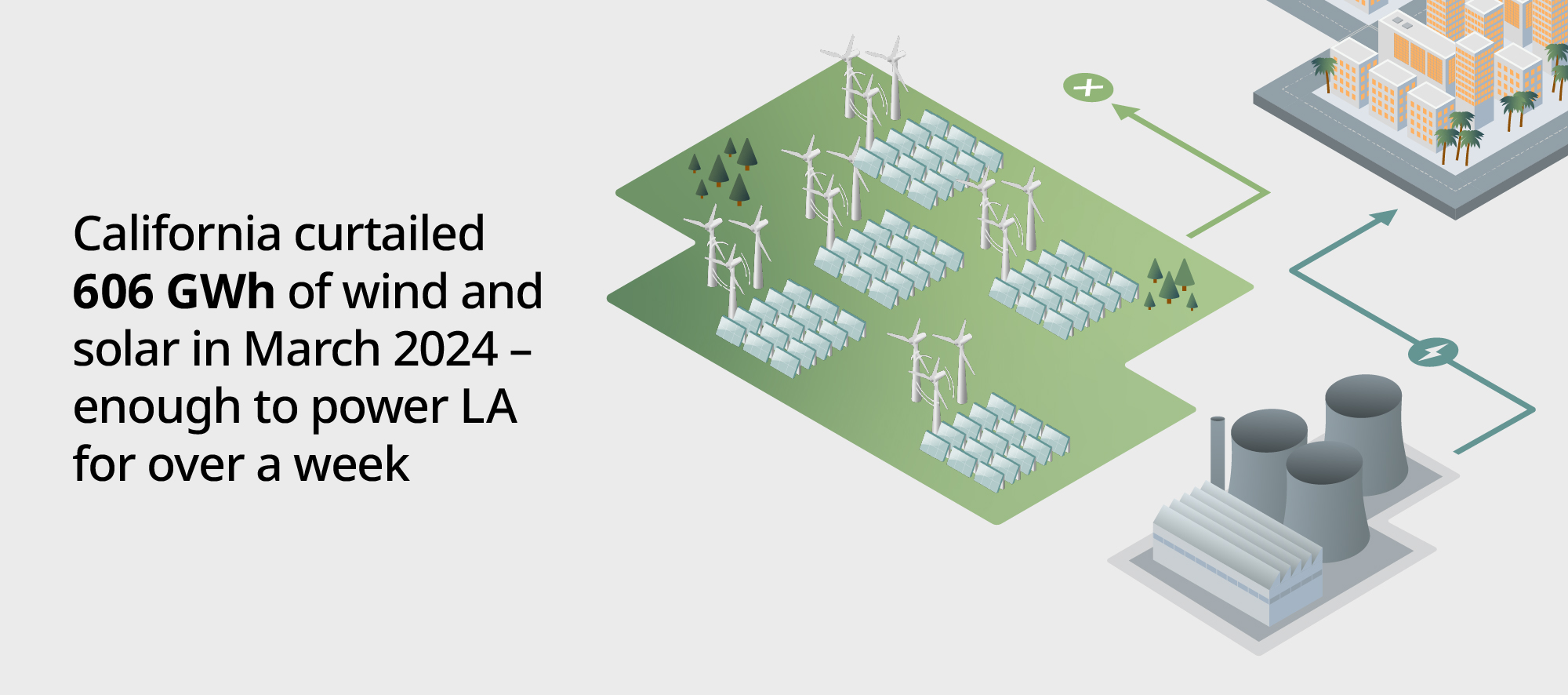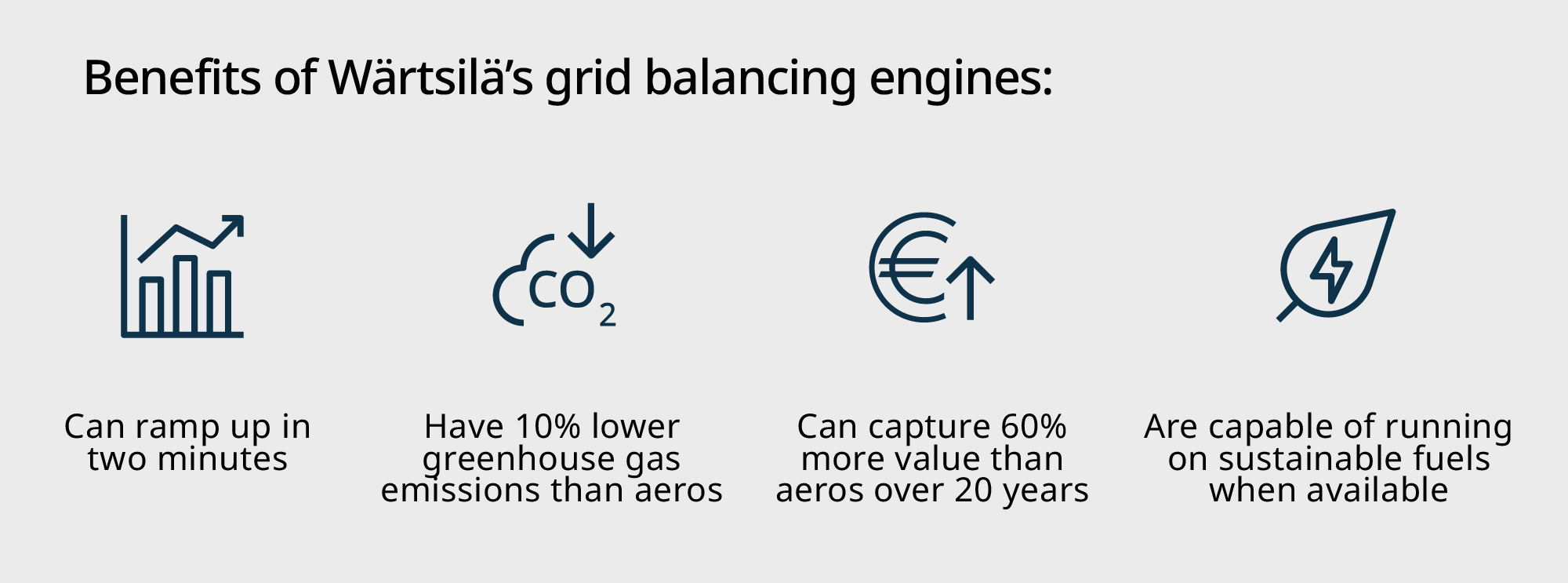

We stand at a tipping point in the energy transition.
By the end of this decade, the amount of renewables deployed globally is set to double and inflexible generation will decrease significantly, with coal and oil generation alone set to decline by 2,300 TWh.
The availability of low-cost renewables and government-decreed climate targets mean that change is happening at an eye-popping rate.
However, this puts stress on our power grids as we shift from inflexible, centralised power to large volumes of decentralised, intermittent wind and solar.
To adapt to this new reality, we need flexible power generation that can react to fluctuations of renewables in a heartbeat.
The optimal technology to drive this transition is grid balancing engines.

The extraordinary rise of wind and solar
Although the amount of renewable generation forecast above is striking, the ambition of governments around the world is even bolder.
At COP28, governments pledged to triple renewables by 2030 to achieve our climate goals and keep global warming below 1.5 degrees.
Increasing renewables is the most crucial solution we have in tackling the climate crisis. The cost of solar fell by 88% and onshore wind by 68% between 2010 and 2021 to help enable that transition.[1]
However, the influx of affordable renewable power is already causing challenges for our power grids.
Curtailment – where renewable power is switched off in favour of inflexible generation – is a significant issue. It wastes power, emissions, and money.
To illustrate the scale of that challenge: In California, wind and solar generation curtailment reached a record high of 606 GWh in March 2024,[2] that’s enough to power Los Angeles’ for over a week.[3]

These issues are prevalent in power systems with only 30-50% renewable power. Imagine their impact once we reach 50-80% wind and solar.
Simply put, it is not feasible to support renewable power with inflexible technologies such as coal, nuclear and combined cycle gas turbines (CCGTs), which take time to ramp up and down and cannot adapt to fluctuations in renewable power.
We need the right type of flexibility and balancing technology to accelerate the growth of renewables and deliver stable, reliable power for every minute of every day – without skipping a beat.
Engines vs Aeros
The crucial question to ask, is: what is the right type of flexible power generation – the optimal technology – to balance renewables and accelerate the energy transition?
Two leading solutions are grid balancing engines, such as those provided by Wärtsilä, and aeroderivative gas turbines (aeros).
On almost every metric, our technology wins out.
The simplest way to understand the difference between an engine and an aero is to picture a car engine compared to an aeroplane turbine. A car engine starts instantly and can be ramped up and down efficiently. An aeroplane engine idles as you board, takes time to get going and then can only operate within limited parameters once you’re in the air.
You wouldn’t use an aeroplane turbine to drive you to the shops, you need something more adaptable and efficient at a variety of speeds.
The same is true when managing our power systems. As we transition to intermittent wind and solar, we need power generation that is adaptable and can suit the fluctuations in renewable generation at the push of a button. We need engines.
Our engines can ramp up in just two minutes to support or balance power systems with no minimum up- or downtime. They have high efficiency and output at all loads even in extreme conditions and generate 10% lower greenhouse gas emissions than aeros.
They outperform aeros when dispatched in real-time markets (i.e. 15- and 5-minute power trading intervals). A study, ‘Uncovering the Hidden Value of Reciprocating Engines in Today’s Energy Markets’, found that engines can capture 60% more value than aeros over 20 years.[4]
Crucially, engines are also ready for a net zero future. Utilising natural gas as a transition fuel today, they will be capable of running on whichever sustainable fuels are most abundant in the future, and not become stranded assets in the decades to come.

The misunderstood role of gas as a transition fuel
There is a common misunderstanding with the perception of gas as a transition fuel.
It is seen as a step between highly polluting generation, such as coal, and renewables. At Wärtsilä, we see things differently.
We believe gas should be used to enable the transition.
We have created power system modelling for almost 200 markets around the world and consistently found that a small amount of grid balancing gas engines in a system can provide the balancing and flexibility to enable renewables to flourish.
Crucially the price of electricity does not need to increase when power systems move to net zero. Utilities are shifting from a costly operational expenditure (opex) model, where capital is continually drawn into fuelling and maintaining legacy inflexible coal, oil, and gas plants – to a new model where up-front capital expenditure (capex) is invested in predictable, low maintenance, renewable energy technology.
Flexibility creates the conditions where renewable energy is the most profitable way to power our grids: ensuring back-up power is available when there’s insufficient wind or solar, reducing curtailment – and earning rewards from capacity mechanisms.
These are not plants running 24/7, they are adaptable and ramp up and down quickly when renewables are not delivering or when there is a high-power demand. That way: a small amount of gas makes a big difference to the system.
At Wärtsilä we have a five-step plan to deliver a 100% renewable energy future anywhere in the world, based on that modelling. The steps are: 1) adding renewables, 2) adding flexibility through balancing engines and storage, 3) phasing out inflexible plants, 4) converting to sustainable fuels, and 5) phasing out fossil fuels.
Our grid balancing engines are essential within that framework, to provide the required flexibility and balancing and enable renewables to dominate our power systems. Excess renewable power can then be used to create sustainable fuels for our engines, to create fully renewable power systems.
Delivering our renewable future
This decade will be crucial in laying the foundations of the clean energy future we envision. It presents us with a unique opportunity: to add more renewable energy than ever before to our grids, build the right level and right type of flexibility into our power systems and phase out inflexible assets while converting to sustainable fuels.
Through our grid balancing engines, energy storage and optimisation, Wärtsilä is providing the beating heart of our future power systems.
The question is not whether we have the technology to deliver the energy transition, it is how fast can we do it? The answer to that question will echo for generations.
[3] Calculation: LA consumes 22,000 GWh per year (https://planning.lacity.gov/eir/StudioCity_SeniorLiving/DEIR/04-N.1_Utlities-Energy.pdf), so average consumption per month is 1,833 GWh. 606GWh is 33% of 1,833 GWh.
Did you like this? Subscribe to Insights updates!
Once every six weeks, you will get the top picks – the latest and the greatest pieces – from this Insights channel by email.


